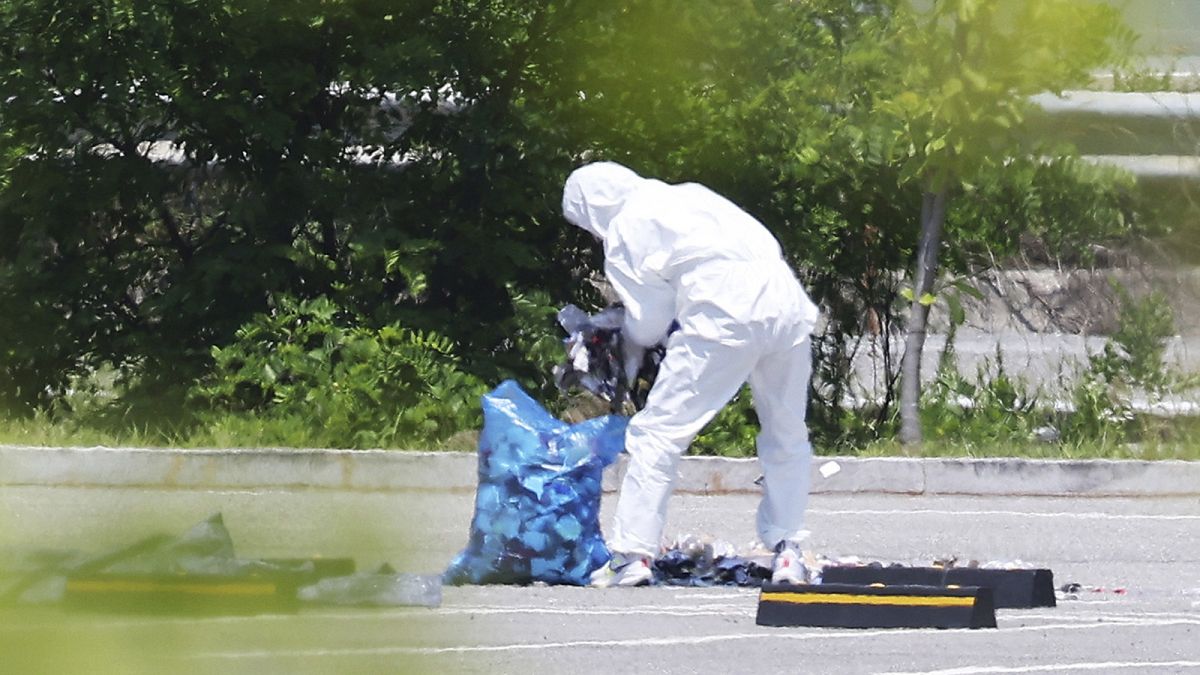Before the water tanker rolled into one of New Delhi’s largest slums, Arvind Kumar was pacing between the gate of a public school and a tea seller’s stall hundreds of yards from his home, where he lives with nine members of his family.
“There, it is coming,” Mr. Kumar shouted to a woman waiting on the slum’s edge. It had been days since their small portion of the slum, which typically receives one water tanker about every two weeks, had received water. And as a heat wave sears the city, tankers are drained more quickly. With their last stored drops now spent, the two neighbors had decided to make sure the truck reached its destination.
The woman boarded the 5,000-gallon tanker and guided its driver through a tight lane, past houses lined with thousands of jerrycans, many chained in place, and onto a stony plateau.
“Sometimes, you need to kidnap the driver,” Mr. Kumar, a salesman, said with a smile, “or you will see your children dying of thirst in this killing heat.”
Over the past few days, temperatures in parts of northern India have hovered well above 110 degrees Fahrenheit, or more than 43 degrees Celsius. More than 60 people, including several working or participating in the country’s general election, whose results will be announced on Tuesday, have died, according to news media reports.
In Delhi, the streets feel like an oven. Work output and mobility have been reduced. Parks usually filled with joggers are thinly populated. Outside the gardens of Humayun’s Tomb, lemonade sellers complained of a drop in business.
“I have been drinking more glasses of water myself than selling them,” said one vendor, Sham Yadav.
With the intense heat, water — piped or trucked to residents — is now in short supply for some 25 million people in the Delhi national capital region.
Every summer, the water table in Delhi is reduced because of the huge demand. But this year’s crisis has also exposed the increasing dysfunction of India’s national governance, with states often stuck in political battles with one another or with the central government. The Delhi regional government has appealed to the country’s top court to force a neighboring state to release surplus water that a second state had provided for Delhi.
As officials have been forced to ration water across the capital region, the crisis has hit nearly everyone, regardless of status. But the challenges are particularly severe for the poor.
The slum where Mr. Kumar lives, Kusumpur Pahari, has no piped water connections. The government defines the slum as an illegal settlement of migrant workers, though people have lived there for three generations. It is a maze of narrow streets and shanties surrounded on one side by glittering shopping malls and on the other by upscale residential enclaves.
Inside its walls are more than 50,000 people. Many work as cleaning staff for nearby embassies, drivers for diplomats, maids for the rich. Their lives are punctuated by the horn of the water tanker.
All day long, the slum’s residents struggle to fill their jerrycans with water for drinking, washing clothes and bathing.
“It is worse this summer,” said Monika Singh, 23, a political science graduate, who was born in Kusumpur Pahari and said she would perhaps “die here.”
Throughout her life, before breakfast, before preparing for class, before choosing what to wear, she has worried about how and where to store water. “Slowly, as the population increases, the war over water has become worse,” she said. “This year, it is really, really bad.”
For decades, people in Kusumpur Pahari and other slums have fought over drops of water pouring from the water tankers. This summer is no different; a video of residents running after, jumping onto and crowding around a water tanker in a slum near the U.S. Embassy spread widely on Indian social media.
“People can kill you for water here, if you don’t listen to them,” said Surinder Singh, the driver of the water tanker that Mr. Kumar and his neighbor waited for over the weekend in Kusumpur Pahari.
When another truck approached to make the second of the two water deliveries that one portion of the slum receives each day, men and women crowded around it, forcing the driver to stop.
“If you come close, I will slit your throat,” a broad-shouldered woman named Neetu shouted toward three women trying to snatch a water hose from her hand.
“Give me first,” cried a housewife, Geeta, who pushed Neetu to the ground.
“You have a grown-up family; my two children haven’t had a bath for days,” another woman, Sarita, said while snatching the hose from Geeta.
“If you don’t give it to me,” she continued, “I will break this bucket on your head, then you won’t be able to fill your bucket.”




















Discussion about this post